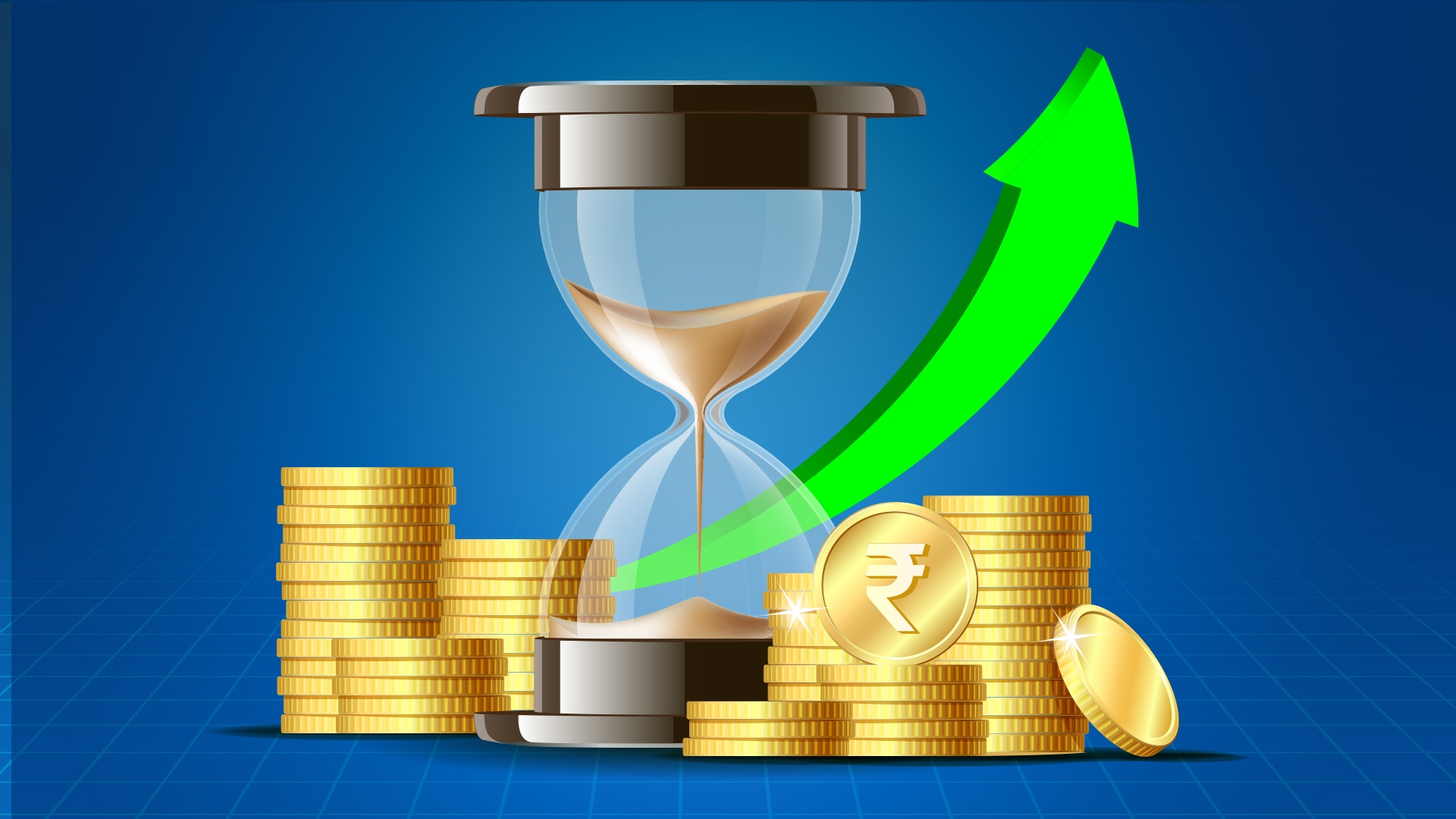Understand the features and differences of cumulative vs non-cumulative FDs before booking your FD to generate maximum returns.
Fixed deposits (FDs) are a popular investment choice among investors due to the secure and guaranteed returns offered. FDs come in two categories, i.e., cumulative and non-cumulative types, distinguished by their interest payout structure.
Each type has its own set of features and benefits, catering to different financial goals and preferences. Cumulative FDs accumulate interest over the deposit period and pay out the entire principal amount along with the accumulated interest at maturity.
Non-cumulative FDs, on the other hand, pay out the interest earned at regular intervals, depending on the investor's preference. However, investors must carefully consider the factors that differentiate them before investing.
A cumulative fixed deposit is a type of FD where interest is added to the principal amount instead of being paid out periodically.
The combined amount earns interest each year, and the total (principal + interest) is paid at maturity. This option is ideal for those seeking long-term savings with guaranteed returns.
Here are some of the benefits of Cumulative Fixed Deposit:
Higher Interest Earnings: Interest is compounded, resulting in a higher payout at maturity compared to regular FDs
Convenience: With interest reinvested, there’s no need to track periodic payouts, making it an easy investment option
Flexibility in Tenure: Cumulative FDs allow you to choose a tenure that matches your financial goals, whether short-term or long-term.
Goal-Based Savings: Cumulative FDs are ideal for saving toward specific goals since funds accumulate steadily for a long period.
Stable and Secure: Fixed deposits provide stability and security, offering predictable returns without exposure to market risks.
You can choose the payout frequency as monthly, quarterly, half-yearly, or yearly in a non-cumulative fixed deposit.
This option is ideal for those needing regular income, such as for EMIs or rent. Senior citizens can also opt for non-cumulative FDs to receive regular payouts for daily expenses.
The following are some benefits of Non-cumulative Fixed Deposit:
Steady income stream: Non-cumulative FDs offer regular, predictable income, making them ideal for individuals relying on fixed-interest earnings for financial needs
Flexibility in payout options: Investors can choose the payout frequency to suit their cash flow needs, offering greater flexibility in financial management
The following table presents a comparative analysis of cumulative vs non-cumulative fixed deposits:
Particulars |
Cumulative FD |
Non-Cumulative FD |
Interest Payout Frequency |
At maturity |
On a monthly, quarterly, half-yearly, or annual basis |
Accumulation of Interest |
Interest accrues throughout the tenure |
Interest is paid at regular intervals |
Periodic Income |
Not generated |
Generated throughout the tenure |
Total Interest Earned |
Compounding interest is added to the principal amount, leading to higher interest earnings |
Due to interest payouts instead of accumulation, the earnings are comparatively lower earnings |
Suitable For |
Depositors looking to grow their savings and create a higher corpus for investment goals |
Individuals depositing a substantial sum in an FD to benefit from frequent interest payouts |
Reinvestment |
You can reinvest the interest earned and enhance your savings |
Since interest is paid out periodically, there is no reinvestment option |
For example, if you invest ₹1 Lakh in a cumulative FD with a bank for five years at an interest rate of 6% p.a. In that case, here is how the cumulative interest on your fixed deposit will be calculated each year:
Year |
Amount on Which Interest is Calculated |
Interest Earned |
Yearly Closing Balance |
1 |
₹1,00,000 |
₹6,000 |
₹1,06,000 |
2 |
₹1,06,000 |
₹6,360 |
₹1,12,360 |
3 |
₹1,12,360 |
₹6,742 |
₹1,19,102 |
4 |
₹1,19,102 |
₹7,146 |
₹1,26,248 |
5 |
₹1,26,248 |
₹7,575 |
₹1,33,823 |
Say you deposit ₹1 Lakh in a non-cumulative fixed deposit offered by a bank. Based on your financial requirements, you can choose an interest payout frequency. Explore the potential earnings based on various payout frequencies in the table provided below.
Payout Frequency |
Interest Rate (p.a.) |
Interest Rate for the Interest Payout Period (A) |
Interest Earned per Payout (A x ₹1,00,000) |
Monthly |
6.00% |
0.50% (i.e. 6% divided by 12 months) |
₹500 |
Quarterly |
6.00% |
1.50% (i.e. 6% divided by 4 quarters) |
₹1,500 |
Half-yearly |
6.00% |
3.00% (i.e. 6% divided by 2 half-years) |
₹3,000 |
Annually |
6.00% |
6.00% (i.e. 6% divided by 1 year) |
₹6,000 |
Here are some factors to keep in mind while making the decision:
Income Requirement: If you need a stable source of income, choosing a non-cumulative FD may be ideal since you can choose from monthly, quarterly, semi-annual or annual returns.
Investment Tenure: Cumulative FDs offer the compounding effect, which can help you maximise your returns over an extended term. So, if you are investing for long-term goals, a cumulative FD may be ideal.
Tax Planning: The tax is deducted at maturity when the interest is paid out in full for cumulative FDs. Whereas, for non-cumulative FDs, tax is deducted at regular intervals in line with the payout frequency.
Risk Tolerance: Both cumulative and non-cumulative FDs are low-risk investments. Cumulative FDs offer higher returns due to compounding, while non-cumulative FDs provide steady, predictable income for those seeking lower risk.
Liquidity Needs: Evaluate your liquidity and emergency fund requirements. The Cumulative FD locks your funds until maturity, while a Non-cumulative FD offers regular interest payouts. Non-cumulative FD provides more flexibility for short-term access to funds.
Tax Implications: Consider the tax impact of both options. In a cumulative FD, interest is reinvested, increasing tax liability at maturity. In a non-cumulative FD, interest is paid regularly, and you must pay tax on it annually based on your tax slab.
Interest Payout Frequency: Choose the payout frequency as monthly, quarterly, half-yearly, or annually for your Non-cumulative FD based on your cash flow needs.
Penalty for Premature Withdrawal: Review the penalty or interest loss for early withdrawal of the FD. Sometimes, choosing a shorter tenure in a Non-cumulative FD can be more beneficial than breaking a long-term Cumulative FD.

Frequently Asked Questions
How does the interest accrual differ in cumulative and non-cumulative FDs?
Cumulative FDs accumulate interest and reinvest these gains throughout the investment period, leading to compounding benefits. Non-cumulative FDs disburse interest regularly, providing a steady income stream.
What are the payout frequency options for non-cumulative FDs?
Non-cumulative FDs offer payout frequencies such as monthly, quarterly, half-yearly, or annual, allowing investors to choose based on their income needs.
Which type of FD is suitable for those seeking regular income?
Non-cumulative FDs are ideal for individuals looking to supplement their current income, providing a reliable source of earnings at specified intervals.
However, the viability of this option as an income source depends on the amount deposited and the financial support required by the individual.
If I want to grow my capital securely, which FD option should I choose?
For individuals focused on steady and uninterrupted capital growth, the cumulative FD option is more suitable due to its compounding nature.
Do non-cumulative FDs benefit from the power of compounding?
No, non-cumulative FDs do not leverage the power of compounding, as interest is paid out regularly, and there is no reinvestment to earn additional interest.
Cumulative and non-cumulative FD: Which is better for me?
Choosing between cumulative or non-cumulative FDs becomes easier once your financial goals are clear.
If your objective is to supplement your current income or establish a consistent source of earnings, a non-cumulative FD emerges as the more fitting choice. Conversely, for those seeking a secure avenue to foster capital growth, the cumulative FD option proves more suitable.
Which type of FD is better for regular income?
Non-cumulative FD may be better for regular income as it provides steady and predictable income.
Which FD offers better returns: cumulative or non-cumulative?
A cumulative fixed deposit generally offers higher returns as compared to a non-cumulative FD.
Can I change the type of FD after opening?
You cannot usually change the type of FD once you open it. However, you can close your existing one and open another one.
Is a cumulative FD suitable for long-term investments?
Yes, a cumulative fixed deposit is a good choice for long-term investments, as it offers a higher return at the time of maturity.
Is a non-cumulative FD better for senior citizens?
Yes, a non-cumulative fixed deposit is a great option for senior citizens seeking a reliable source of income. They can opt for monthly or quarterly interest payouts and enjoy a stable income source.
Can I open a cumulative or non-cumulative FD online?
Yes, you can open a cumulative or non-cumulative fixed deposit online in some simple steps after visiting the bank's website or app.
What is the minimum deposit amount for cumulative and non-cumulative FDs?
The minimum deposit amount for cumulative and non-cumulative FDs varies from bank to bank. Generally, the amount is between ₹1,000 and ₹10,000.
What is the ideal duration for a cumulative FD?
A cumulative FD is ideal for long-term planning, as the compounded interest grows significantly over time.
Can I opt for a cumulative FD if I need liquidity?
No, you should avoid a cumulative fixed deposit if you need liquidity, as the interest is reinvested and paid only at maturity.




